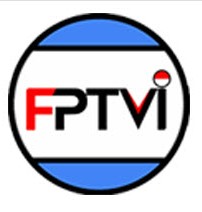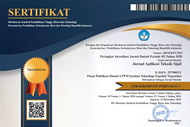Identifikasi dan Benchmarking Faktor Penghalang Implementasi Konsep Lean Construction pada Megaproyek di Indonesia dengan Metode MICMAC
Abstract
Megaprojects have very high complexity because they are interconnected with several functions and organizations currently, many megaprojects have poor performance in terms of quality management which results in productivity and quality of work. Waste in the construction sector in Indonesia is quite large, namely 57% when compared to the manufacturing industry which is only 26%, one of the concepts that can be adapted from the manufacturing industry is the lean concept. This study aims to identify the inhibiting factors in the implementation of the lean construction concept in megaprojects in Indonesia. Factor identification is carried out by collecting factors from previous research and distributing questionnaires to practitioners and respondents who are directly involved in project construction, which is then classified or benchmarked to find the fundamental factors in implementing the concept of lean construction in megaprojects in Indonesia. The method for classifying factors in this study is Matrices Impacts Cruise's Multiplication Appliquee a UN Classement (MICMAC) where benchmarking is carried out based on driving power and dependent power, which in this study obtained 2 clusters namely driving power and linkage for barrier factors.
Keywords
Full Text:
PDFReferences
J. G. Sarhan, B. Xia, S. Fawzia dan A. Karim, “Framework for the Implementation of Lean Construction Strategies using ISM technique : A case of Saudi Construction Industry,” Engineering, Construction, and Architectural Management, pp. 1-23, 2019.
P. Today, “https://www.pbctoday.co.uk/news/planning-construction-news/countries-investing-construction/54507/,” 25 March 2019. [Online]. Available: https://www.pbctoday.co.uk/news/planning-construction-news/countries-investing-construction/54507/.
G. F. e. a. Jergeas, “Why Cost and Schedule Overruns on Mega Oil Sands Projects?,” PRACTICE PERIODICAL ON STRUCTURAL DESIGN AND CONSTRUCTION, pp. 40-43, 2010.
A. Z. Nashruddin dan F. Rachmawati, “Analisis Evaluasi Waste Management pada Proyek Konstruksi Gedung di Kota Surabaya,” Jurnal Aplikasi Teknik Sipil, vol. 20, no. 3, pp. 363-369, 2022.
D. S. Nyata, “ANALISIS KETERLAMBATAN PADA PROYEK PT.JATIM TAMAN STEEL Di Gresik Dengan Menggunakan Lean Six Sigman Framework,” Master's Degree Thesis, 2017.
M. Abduh dan H. Roza, “Indonesian Contractor's Readiness Towards Lean Construction,” 2006.
M. Abduh, “Konstruksi Ramping: Memaksimalkan Value dan Meminimalkan Waste,” Bandung, 2006.
L. Alarcon, “Lean Construction,” dalam Lean Construction, Rotterdam, Netherlands, Balkema, 1997, pp. 1-10.
G. Shang dan L. S. Pheng, “Barriers to lean implementation in the construction industry in China,” Journal of Technology Management in China, vol. 9, no. 2, pp. 155-173, 2014.
A. P. Mano, S. E. Gouvea da Costa dan E. P. de Lima, “Criticality assessment of the barriers to Lean Construction,” International Journal of Productivity and Performance Management, 2020.
S. Khaba dan C. Bhar, “Modeling The Key Barriers To Lean Construction Using Interpretive Structural Modeling,” Journal of Modelling in Management, 2017.
M. Watfa, “Critical Success Factors for Lean Construction: An Empirical Study in the UAE,” Lean Construction Journal, pp. 1-17, 2021.
J. G. Sarhan, B. Xia, S. Fawzia dan A. Karim, “Framework for the implementation of lean construction strategies using the interpretive structural modelling (ISM) technique A case of the Saudi construction industry,” Engineering, Construction and Architectural Management, vol. 27, pp. 1-23, 2019.
R. Attri, N. Dev dan V. Sharma, “Interpretive Structural Modelling (ISM) approach: An Overview,” Research Journal of Management Sciences , vol. 2, no. 2, pp. 3-8, 2013.
W. Mendenhall dan R. J. Beaver, A Course in Bussiness Statistics, 3rd Edition penyunt., Boston, USA: PWS-KENT Publishing Company, 2002.
Sugiyono, Metode Penelitian Kuantitatif, Bandung: Alfabeta, 2006.
W. Albalkhy, “Barriers to adopting lean construction in the construction industry: a literature review,” International Journal of Lean Six Sigma, 2020.
N. Kumar, S. Kumar, A. Haleem dan P. Gahlot, “Implementing Lean Manufacturing System: ISM Approach,” Journal of Industrial Engineering and Management, vol. 6, no. 4, pp. 996-1012, 2013.
S. Kumar, S. Luthra dan A. Haleem, “Customer Involment in greening the supply chain : An Interpretive Structural Modeling Methodology",” Journal of Industrial Engineering, pp. 1-13, 2013.
P. Baviskar, “Critical success factors for effective implementation of lean assessment tools/framework in manufacturing industries,” KTH Royak Institute of Technology , 2015.
M. Al-Najem, H. Dhakal dan N. Bennet, “The role of culture and leadership in lean transformation: a review and assessment model,” International Journal of Lean Thinking, vol. 3, no. 1, pp. 120-138, 2012.
B. Xia, “The selection of design-build operational variations in the People’s Republic of China using Delphi method and fuzzy set theory,” PhD Thesis, The Hong Kong Polytechnic University, 2010.
P. Agrawal, R. Narain dan I. Ullah, “Analysis of Barriers in Implementatation of Digital Transformation of Supply Chain Using Interpretive Structural Modelling Approach,” Journal of Modelling in Management, pp. 297-317, 2020.
R. J. Chapman, “A framework for examining the dimensions and characteristics of complexity inherent within rail megaprojects,” International Journal of Project Management Vol. 34,, pp. 937 - 956, 2016.
C. e. a. Biesenthal, “Applying institutional theories to managing megaprojects,” International Journal of Project Management, 2017.
DOI: http://dx.doi.org/10.12962%2Fj2579-891X.v21i2.15342
Refbacks
- There are currently no refbacks.

Jurnal Aplikasi Teknik Sipil by Pusat Publikasi Ilmiah LPPM Institut Teknologi Sepuluh Nopember is licensed under a Creative Commons Attribution-ShareAlike 4.0 International License
Based on work at https://iptek.its.ac.id/index.php/jats




